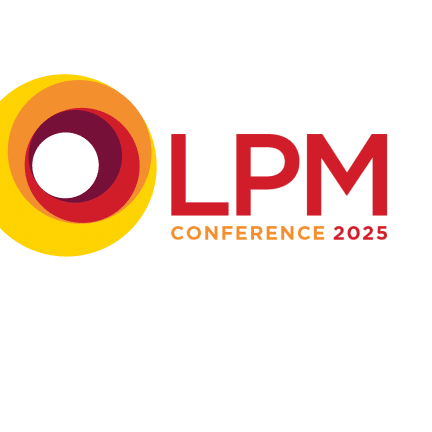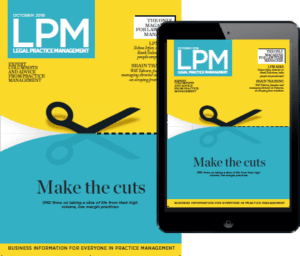
Embrace your security policy to thrive
Firms tend to build defenses against external security breaches, but internal threats warrant the same attention, says Manuel Sanchez, information security and compliance specialist at iManage.
Protecting an organisation’s data and intellectual assets from inside threats is something that’s not often talked about — until things go very wrong. External breaches are usually the headline makers, but internal security risks deserve just as much attention. According to a 2022 report by the Ponemon Institute , insider threats increased by a staggering 44% in 2022 (1) and 74% of organisations say they are moderately vulnerable or worse to insider threats, as shown by a 2023 report by Cyber Security Insiders.
A security policy outlines an organisation’s rules and procedures to maintain a secure working environment and shouldn’t be something to be used to reprimand employees, but something that offers stability to your workplace and provides the blueprint for the growth of your organisation.
A robust security policy not only covers your internal team, but also any business partners with network access, covering all bases and allowing your team to forward in any situation with confidence.
How to set a security policy
A comprehensive security policy is typically comprised of two parts: technical and organisational. The technical aspect includes critical elements such as network diagrams, segmentation details, router and access point locations and documentation that shows which personnel have which levels of access and administrative privileges. An incident response plan is also a crucial inclusion.
On the other hand, the organisational part of the policy sets rules and guidelines for employee access and usage of information, data and intellectual property owned by the firm or its clients. Topics such as acceptable use of IT infrastructure, access control, handling sensitive data, email protocols and social media usage are addressed to ensure a secure working environment.
For a security policy to be effective, it must be applicable to everyone within the organisation, from leadership and partners to associates and administrative staff. Clearly defining consequences or penalties for any inappropriate use of IT and knowledge assets, whether intentional or inadvertent, strengthens the policy’s impact. To achieve widespread adherence, the policy must be reinforced through periodic training and ongoing communication.
Finding a balance
Finding the right balance between security and accessibility is crucial, especially for professional service providers like law firms. A harmonious integration of these two factors is fundamental to enhancing knowledge work and achieving success.
When considering information barriers to maintain confidentiality of client information, applications like iManage Security Policy Manager can play a pivotal role in enforcing effective knowledge and intellectual property safeguards, while facilitating appropriate accessibility for relevant stakeholders. Though primarily designed for law firms and corporate legal departments, the ability to set need-to-know access at scale across various repositories can benefit organisations in various industries.
Efficient and secure cross-business knowledge sharing is vital for breaking down silos and promoting collaboration across your organisation, ultimately leading to better business outcomes. For law firms, security must encompass the entire legal document lifecycle, from creation to management, legal hold, records retention and disposition.
Make security part of the workflow
To ensure smooth adoption of security measures, it is crucial to make security unobtrusive and transparent. Enabling technologies to provide secure access to data from any device provides ease of use while staying compliant with rapidly evolving regulatory changes.
In today’s dynamic landscape, modern organisations require systems that offer both high security and granular access controls, allowing flexibility without compromising data protection. By regularly revisiting and strengthening your security policy, you can safeguard your organisation’s valuable knowledge and sensitive data while fostering a secure and collaborative working environment. Protect your knowledge and secure your vision for a safer and more successful future.

Three steps to driving digital transformation with an outcome mindset
Next-level leaders are now focusing on higher-level business outcomes to achieve a timely return on investment with an outcome mindset, according to Natalie Alesi, customer success senior director at iManage.
What was the last outcome you wanted to achieve with a past technology project? It’s common to hear goals like “we want to get to the cloud” or “we need to move all users to this platform”. But to get to a point where you can demonstrate ROI, you need to shift your mindset from deployment to implementing a change that leads to true business transformation. That’s where the outcome mindset comes in.
People assume their organisation needs to change after a technology installation or data migration occurs. The challenge is to make those changes happen simultaneously with these three key strategies.
Engage your users
Engaging your users can be a struggle in professional services organisations as there can be a gap between the technology teams and the people using the tools at the end of the chain. That gap is going to stop you from achieving the overall success outcomes.
First of all, it will mean that you won’t deliver something that will ultimately be valuable to people because you haven’t got a rich understanding of how people work. Secondly, if you’re unable to explain it to them in terms that resonate with them, then that gap is just going to get wider.
Engaging with users as much as possible will be advantageous in sculpting what success outcomes you want to drive. Being close to the work people are doing, and the specific problems they are facing will help you shape your success outcomes.
You’ll likely have to make critical decisions on configurations of customisations that can only be informed by those using the technology on a day-to-day basis.
Employ a framework
Think about what success looks like for your organisation. If your goal is increased collaboration, ROI, then set that as your outcome and work backward from that point using a framework of four categories: troubled, surviving, succeeding and thriving.
You can plot where your organisation sits on that scale in the key areas of people, process and product. For example, you may need help with people resources, requiring a project champion to push the project forward.
If you think about your processes, you may identify a need for more solid documentation on your operations and limited training around them. When plotting these different threads, you’re finding that you may be troubled or surviving in some areas, and by moving the needle, you can achieve that higher level of business outcome.
When you think about this perspective, it should be easier to identify those critical areas of change that all lead to a successful outcome for the organisation.
Achieve stakeholder buy-in
Finally, you need to get buy-in from the decision maker and sponsor and overcome any stakeholder objections. This can be an interesting one because this varies from organisation to organisation. Some will have relatively senior decision-makers and sponsors that will already be speaking this language. For those people, your framework and outcome mindset might be music to their ears. The rest of the organisation aligns with the business outcomes the firm wants to achieve.
You’ve got a slightly different dynamic in organisations where this approach is just as new for the decision-makers and sponsors. By introducing leaders and decision-makers to this methodology and gaining their buy-in, you can leverage their influence and authority to drive impactful change. This top-down approach empowers you to make a greater impact by harnessing the collective momentum and support of those in key positions, rather than relying solely on individual efforts to generate change from the ground up. Not only do you get to deliver more effective projects, but you get to introduce this new skillset to the leaders of your organisation. That’s an exciting proposition and can help build bridges and deliver more successful projects in the future.
These strategies will let you develop a process with the freedom to pilot things, see how they work and repeat them and continuously iterate until you are confident that you’re achieving that successful outcome.
Most Popular

Where are the challenges for SME law firm leadership changing?

The leading annual picture of SME law firms' changing strategic priorities

Law firms undertaking identity verification checks must register as an ASCP

Robust onboarding processes are fundamental to effective risk prevention
TA Triumph-Adler provides tailored support to meet compliance requirements

Osprey Approach's webinar explores the benefits of a digital-first approach

ChatGPT and the future of knowledge
Is ChatGPT a friend or a foe when it comes to knowledge work in law firms? Alex Smith, global product management lead at iManage, examines both sides of the coin.
One way or another, ChatGPT will have an impact on knowledge work. Its generated content may have even been consumed by us without our knowledge. Large language models have made huge advancements in the ways that they can string together words in complex sentences to give the impression of intelligence, like a typeahead on steroids. But large language models like ChatGPT do often get things wrong, and when they do, they go ‘all in’, on these alternate facts and realities. In an entertaining piece of marketing, their development teams have labeled these bugs as “hallucinations.”
A token effort in stopping burnout
Ask ChatGPT to draft a fully bulletproof contract for a Sydney real estate purchase and it’s like watching a lawyer on fast forward after four double espressos. When ChatGPT is generating its output, it doesn’t intentionally mimic human typing (unless it’s programmed to slip in the odd mistake to make text appear more human). It’s actually processing chunks at a time using a token system. Words are broken down into multiple “tokens” to predict what text it should output next.
If we see hesitation from a colleague on Slack or Microsoft Teams, we may think that they are unsure of their response, or thinking it through. It’s impossible to identify hesitance or lack of confidence in generated answers from ChatGPT, because its language model is incapable of doubting it’s abilities. In contrast, in a recent survey of 9,615 global knowledge workers, it was reported that seven in ten have experienced imposter syndrome, and that 42% had experienced both imposter syndrome and burnout.
In an industry founded on interpretation of very solid pieces of truth like laws, case law, and citable material, there’s a real danger that ChatGPT could create vastly more work than it can help complete. Although it’s capable of sorting through huge amounts of data to filter out irrelevant information, generative AI is prone to errors – ones that need to be caught by human intervention. That could really add to the burnout statistics.
The human component
For a new generation of knowledge workers, ChatGPT could be one of many tools in the toolbox that fills the gaps in collaboration that were eroded during Covid due to remote working. But for knowledge work overall, humans will still very much be part of the equation, doing their part — in conjunction with any supporting technologies — to make sure legal professionals have all the resources they need to effectively do their jobs.
ChatGPT won’t be (and isn’t capable of) replacing the skills of human lawyers in their ability to provide advice and solve problems any time soon. While generative AI may serve as a useful starting point, when it comes to generating highly accurate documentation based on fact, and in the words of A Few Good Men, ChatGPT “can’t handle the truth!” Not yet, anyway.
Most Popular

Where are the challenges for SME law firm leadership changing?

The leading annual picture of SME law firms' changing strategic priorities

Law firms undertaking identity verification checks must register as an ASCP

Robust onboarding processes are fundamental to effective risk prevention
TA Triumph-Adler provides tailored support to meet compliance requirements

Osprey Approach's webinar explores the benefits of a digital-first approach

Value is in the hands of the user
A hard truth about tech solutions is that they don’t deliver value unless they are used, says Jack Shepherd, legal practice lead at iManage.
So much work goes into any product launch and subsequent user adoption that one fact is often overlooked – there is zero value realised before a tool is used.
As Peter Duffy of Legal Tech trends often reminds me on Twitter: “All the beautifully crafted user stories, wireframes, polished designs, and lines of code are a store of value.” That value isn’t realised until the product actually falls into the hands of customers. Any engineering work you do before that does not equate to any value. As with any testing, it’s only when the actual end-users get value from it.
It’s easy to fall into the trap of believing that all the initial hard work equals value delivered. But the truth is, the only way to truly evaluate the effectiveness of a process is by looking at how it’s being followed by actual users. If it’s not adding value, it’s time to reevaluate. Unless, of course, it was a marketing play all along.
A lot of work goes into implementing tech and none of it makes any impact on a business. That’s just the way it is.
Get it shipped
A striking contrast between the tech industry and the legal sector lies in their approach to product development, says Jacqueline Schafer. In tech, a cardinal rule is to “ship” a feature – that is, release it to customers – even if the initial version is less than perfect and potentially embarrassing. The reason for this is that if you spend too long developing bells and whistles, you are missing out on all the value that could be delivered to people without those bells and whistles.
The legal profession is known for valuing accuracy above all else, which can make it difficult to embrace the ‘launch and iterate’ mentality that is common in the tech world. Professional liability concerns only add to the pressure, and it’s understandable why some lawyers may hesitate to adopt new tools and processes. Encouraging a culture of knowledge sharing can help to break out of this box, but it must come from building institutional knowledge, not from individuals.
At the same time, of course, there are plenty of tech companies that misinterpret the need to “ship” a feature as shipping buggy or faulty features. Don’t fall into this trap. The key question is when you deliver value. You will find it tricky to deliver value by shipping something that doesn’t work.
Change needs a proper introduction
We can’t just single out the lawyers for every failed tech adoption though (no, really, we can’t). The main point of failure that I see is businesses buying software solutions that don’t drive a tangible business outcome or user outcome. That’s the crux of it. Without these key goals in place, nobody cares, and nobody is telling them to care. It’s a change management nightmare.
There’s often a common outcome when organisations bring in someone new to lead the implementation of new systems – failure. Change needs a proper Introduction, or it will be attacked and expelled, writes freelance advisor Jennifer Marsh. So existing staff may not swarm the new employee in the canteen like an immune system protecting itself from a virus, but it will be a difficult job for anyone to secure buy-in and support from the most powerful members of the organisation.
Change the record?
74% of the law departments that iManage surveyed stated that a drive for internal efficiency is their top priority and that using technology to simplify those processes was the next highest. The key, of course, is to relate these to business outcomes. For example, does an efficient law firm actually make more money?
We have created an extensive whitepaper that steps through how law departments can work smarter and be more productive by adopting modern document management.
Work smarter, be more productive by downloading this research that steps through how law departments can adopt modern document management.
Most Popular

Where are the challenges for SME law firm leadership changing?

The leading annual picture of SME law firms' changing strategic priorities

Law firms undertaking identity verification checks must register as an ASCP

Robust onboarding processes are fundamental to effective risk prevention
TA Triumph-Adler provides tailored support to meet compliance requirements

Osprey Approach's webinar explores the benefits of a digital-first approach

Knowledge – past and future
Knowledge working as a concept has been around for decades, and firms need to revisit its definition when reinventing their processes for the future, says Jack Shepherd, legal practice lead, iManage.
Knowledge work is not a new phenomenon. Peter Drucker coined the phrase ‘knowledge workers’ way back in 1959 in his book The Landmarks of Tomorrow. It was created to distinguish manual work and ‘knowledge work’, the latter as work that primarily involves the use of knowledge and creativity to solve problems and create value.
64 years later, does that definition of knowledge work still stack up?
Despite massive change and innovation, the goals of knowledge work should remain true. Though, I can’t help but feel the added weight of expectation for the modern knowledge worker. Legal professionals are now expected to actively share their knowledge and expertise with their colleagues in order to contribute to a collective knowledge that benefits the entire firm. We’re team players, but getting knowledge workers to share knowledge can be like getting blood out of a stone.
Is personal knowledge management the missing link?
While we rely on the omniscient knowledge of the internet at our fingertips more than we’d like to admit, it’s how and what is stored in our brains that might be the missing link in the knowledge economy.
Muhammad Mustafa Monowar, an EMBA Student at the University of Liberal Arts Bangladesh, writes in The Business Standard that to solve big problems, organisations need savvy employees that may benefit from adopting an approach called personal knowledge management (PKM). By doing so, individuals create habits that could lead to an “exponential accumulation of expertise over one’s lifetime” making these individuals highly productive and intellectual.
Monowar says that this approach could be the missing link we require to integrate ourselves with new sources of information and to help harness the flow of information through a culture of learning and knowledge sharing. This is a strategy knowledge work organisations would be wise to consider. Let people build up knowledge for their own purposes, then skim the best off the top. Law firms often call this a ‘freedom to play’ strategy.
The role of employees is changing
Knowledge work now spans a spectrum of job roles that would have previously been purely manual work says Bastian Maiworm Co-Founder of AmberSearch. Consider the example of a mechanic. Previously, diagnosing a mechanical problem relied on sensory inputs such as sound and sight to gauge mechanical performance and detect the fault. That process has largely now it has been replaced by software diagnosis.
That’s an extreme example compared to the changes that law firm employees have undertaken, an obvious example being forced remote working. But even remote working has given us a unique opportunity to redesign how knowledge sharing works withing our firms. There’s no incidental, in-person knowledge sharing at the office coffee machine. A meeting now requires more structure which may result in better archiving of knowledge, and that could be beneficial for everyone. Hybrid working conditions have presented challenges for knowledge sharing, but huge opportunities for people to almost start with a blank sheet of paper, and actually design workflows.
Chasing productivity
“It’s an unusual notion in the history of large-scale economic organisations, this idea that we leave it up to the individual to figure out how to organize their work,” notes Cal Newport, computer science professor at Georgetown University.
Armed to the teeth with messaging apps, email platforms and project management tools, aren’t we supposed to be more productive than ever? I regularly speak to people chasing the next “legal innovation” in the pursuit of increased productivity. I’m not a fan of the phrase.
Legal innovation makes it sound like the only change that can come has to be in some way innovative, and that’s far from the truth. Of course, there’s a huge amount of amazing new tech that helps, but you shouldn’t do so at the expense of considering older or more established things too. In fact, you should probably start with what already exists because you can improve things with zero cost, in familiar interfaces in tools people already use.
Now, how’s that for productive.
Read more about how you can activate your organization’s expertise in the Knowledge Unlocked datasheet free download (https://imanage.com/solutions/knowledge-unlocked/).
Most Popular

Where are the challenges for SME law firm leadership changing?

The leading annual picture of SME law firms' changing strategic priorities

Law firms undertaking identity verification checks must register as an ASCP

Robust onboarding processes are fundamental to effective risk prevention
TA Triumph-Adler provides tailored support to meet compliance requirements

Osprey Approach's webinar explores the benefits of a digital-first approach

Change, innovation and training
Training to use new systems takes time and dedication from lawyers – the challenge is to find the capacity, says Jack Shepherd, legal practice lead at iManage.
So, your lawyers can’t streamline their workflow until it’s moved to a new system, but they can’t make time for training on the new system because they’re too busy delivering for clients. Sound familiar?
Keep it simple. Don’t tell me you don’t run a mile when you see a four-hour block of training added to your calendar, or a set of instructions in an email longer than most merger and acquisition contracts. Think about formats like bite-sized videos or target times when people are likely to have the headspace for learning.
When pushing for onboarding, I usually prefer to use a carrot rather than a stick, but sometimes it takes for something to be taken away for people to realise they have no choice but to learn how to use a new system.
What can really move the needle is leveraging your lawyers. People are more likely to listen to training from other lawyers (sorry IT department). In an article, Legatics CCO Daniel Porus suggests that you identify your champions and leverage early successes – celebrate those early wins to gain momentum and build greater awareness across the business with people who are eager to be a part of the success.
Training ChatGPT in the art of contracts
In a bid to save time, I’ve been putting ChatGPT through some more testing real-world scenarios. I put its language learning model to the test recently by throwing a few contract drafting scenarios its way. At first glance the results are superficially impressive, but then crumble under any meaningful scrutiny. Part of the problem is that the output of Chat GPT will vary wildly depending on how your input is phrased — for instance, asking the same question in a slightly different way may produce a massively different output. Given its ability to string together a sentence, this is useful for idea generation or creativity, but perhaps less so for a profession that relies on consistency.
The fact is, ChatGPT does not actually understand the legal consequences of the text it spits out. It operates in the vacuum of cyberspace, never taking into account important factors such as what the governing law should be.
To be fair, ChatGPT’s does display a disclaimer that its content should “not to be used without consulting an attorney.” You’d be very brave to use anything more than a few words professionally without thoroughly reviewing and refining its outputs. The general consensus is that, at present, ChatGPT’s role is more suited for producing rough contract drafts rather than final versions. It is a time saver, but like us all, could do with a bit more training.
Collective intelligence isn’t a solo venture
The real goal for upskilling a workforce is reaching maturity in collective intelligence. Overcoming the challenges of hybrid working is as much about upskilling people as it is about technology. The firms that excel – by boosting knowledge sharing and collective intelligence during change – are the ones that address both human and technical aspects. The new post-Covid norm requires lawyers and employees to adapt to new work methods, which as we know, is not easy.
IT leaders must use technology to bridge the gaps in communications and collaboration, actively seeking to move their whole workforce towards a shared goal. Those that do can expect to see diverse perspectives in problem-solving as well as enhanced creativity and innovation within their firms.
How can technology help achieve this? iManage CMO, Dan Carmel, explores how firms and legal teams can tap into their collective intelligence to regain what is lost and win back their momentum in a hybrid world.
Most Popular

Where are the challenges for SME law firm leadership changing?

The leading annual picture of SME law firms' changing strategic priorities

Law firms undertaking identity verification checks must register as an ASCP

Robust onboarding processes are fundamental to effective risk prevention
TA Triumph-Adler provides tailored support to meet compliance requirements

Osprey Approach's webinar explores the benefits of a digital-first approach

The chat bots are coming, and they’re a talkative bunch
Artificial intelligence is making tremendous strides, though is it ready to take on more legal work? Jack Shepherd. legal practice lead at iManage, looks into the symbiotic relationship between tech and legal services.
There’s no doubt that the uncannily human-sounding AI chatbot ChatGPT is impressive. It spits out incredibly accurate answers in a slightly unnerving conversational tone. But is this a mere party trick, or should lawyers be afraid?
Having posed some questions on specialist subjects (including law) and shared the output with a few experts, each one of them revealed to me that the response is impressive if negligent but for the caveats at the end.
Will ChatGPT make lawyers obsolete, poses Reuters? For now, it’s unlikely. Executives at Google (who it’s suggested could have released a similarly accomplished model if they so wanted) say the technology is still too immature for them to release a working model. There are issues with bias, toxicity, and a propensity for simply making information up. Maybe AI could replace a lawyer, but it would do a really terrible job.
So, what are the top use cases for Chat GPT for legal right now? First drafts of letters and short contracts perhaps. Ghostwriting articles for LPM? Indeed, there’s a risk here of looking for problems through the lens of a particular solution. This is always dangerous.
One size does not fit all
Modernisation isn’t always about implementing new technology. Adoption of tech is often touted as more of a priority than standardising processes but really, improving use of technology is based on standardising processes.
Looking to external industries for inspiration, the legal sector is finally catching-on to the benefits of project management. I still hear a lot of reference to ‘legal project management’ – personally, I’d prefer to lose the “legal” prefix and actually accept that the stuff lawyers do isn’t too fundamentally different from other professions.
The uptake of project management in law is a fairly new trend, but used effectively can allow legal professionals to achieve huge efficiencies. That’s not to say that law firms should be tempted to bring in a project management consultant, reports the Law Gazette in a recent article.
Have you tried being more digital?
Being ‘more digital’ is now a minimum requirement for law firms, the FT suggests in a recent law firm index for North America. Whereas advances in cloud data strategy may have been lauded as innovation prior to covid, relentless progress towards a digital-first approach is now the expected.
With transition to a truly digital-first law firm comes even bigger challenges such as security. A modern security culture isn’t just about having an IT team with their finger on the pulse and the occasional training session. Employees must embrace the ways that company data is accessed, used, stored, and shared.
Above all, security measures cannot hinder users. Seamless access with the maximum degree of data protection achieves the desired balance between accessibility and security.
Download the latest iManage security eBook to learn why a moderns security culture matters.
Most Popular

Where are the challenges for SME law firm leadership changing?

The leading annual picture of SME law firms' changing strategic priorities

Law firms undertaking identity verification checks must register as an ASCP

Robust onboarding processes are fundamental to effective risk prevention
TA Triumph-Adler provides tailored support to meet compliance requirements

Osprey Approach's webinar explores the benefits of a digital-first approach

Change? It’s just not practical
Clearly defined processes combined with a more open-minded approach to technology can help law firms with their change management processes, says Jack Shepherd, legal practice lead at iManage.
In a recent catch up with Law.com Ed Estrada, consultant, adjunct professor at Cornell Tech expressed that “resistance to technology takes many forms”. It’s a very human behaviour to find any means possible to resist change. Whether that’s the resistance to invest, change behaviour, or even eliminate behavioural habits that get in the way of progress. As I’ve mentioned in a previous blog, Lawyers will never adopt something new unless they can see that the value it offers outweighs the burden of changing their ways of (not) working in the first place.
I recently attended the Briefing Knowledge Leaders event, where Dr Pippa Lally (a psychologist, with no legal experience) talked about habit forming and habit breaking. She identified some great practical tips on how to instigate change: one, people are persuaded more by loss aversion than gaining benefits; two, people are biased towards immediate, rather than future benefits; three, people are more likely to change if social norms are established; and, four, people are more likely to change if friction is introduced around existing habits and working practices.
In an industry that’s conventionally tied to the billable hour, time spent adopting new technology is never going to be practical, but it’s something that law firms must do to remain competitive. Estrada goes on to say that “many firms are still operating as if competition is limited to other law firms.” Technology is readily enabling in-house departments to perform functions normally shipped to outside counsel. Imagine being left behind – by your competition and your clients alike.
Lost in translation
To facilitate any meaningful change, there is a real need to document and follow defined processes, because technology and change does not exist in a vacuum – it manifests in the things people do day-in day-out. Defining processes will help minimise the risk of misinterpretation. As well as it being human nature for people to avoid change, we must also remember that judgement tends to be subjective. The need for subjectivity can often clash with the need to follow objectively defined processes.
Take this fascinating study featured in Artificial Lawyer – if a lawyer were to tell you that you have a ‘likely’ chance of being successful in a dispute, what probability would you assign to that statement? In the study, conducted by the UK Government in 2020, some assigned a 60-75% chance while others believed it was an 85-100% – something to keep in mind when trying to maintain important relationships with clients.
Can we have a little chat?
Having switched from an organisation that was 98% email-based for communications to one that is 80% instant messaging-based, I can confirm that having some things in email and some
things in instant messaging apps does not cause me the headaches that I thought it would.
I don’t get why people get so hung up on the “what do I do in email and what do I do in instant messenger?” question. Nobody asked before – “when do I phone people? when do I see them in person and when do I send an email?” Different formats of communication have existed for as long as the legal profession itself and have their specific use cases.
Other retorts I hear from knowledge workers include things like – “our communication style is too formal for chat.” Not true. People regularly send emails less than a minute apart, then they overlap because they are sending them at the same time. They are chatting. Just in email, the wrong tool for the job.
To help maintain a culture of collaboration while working remotely, take the iManage quiz to find out if your organization is following instant messaging best practices.
Most Popular

Where are the challenges for SME law firm leadership changing?

The leading annual picture of SME law firms' changing strategic priorities

Law firms undertaking identity verification checks must register as an ASCP

Robust onboarding processes are fundamental to effective risk prevention
TA Triumph-Adler provides tailored support to meet compliance requirements

Osprey Approach's webinar explores the benefits of a digital-first approach

Are organisations adequately supporting the current and future lawyer?
Jenny Hotchin, legal practice lead at iManage, examines the ‘quiet quitting’ trend and the role legal tech could play in keeping employees motivated.
Quiet quitting
At least 50% of the U.S. workforce is now made up of ‘quiet quitters’, finds a report from Gallup. The term, which has been doing the rounds on social media in the last few months, refers to the idea of coasting in your role and not going any further than your job description.
The study, based on a random sample of 15,091 full- and part-time US employees suggested that the overall decline was especially related to clarity of expectations, opportunities to learn and grow, feeling cared about, and a connection to the organisation’s mission or purpose.
According to the report, engagement figures are particularly low among remote Gen Z and younger millennials (those below the age of 35), as “less than four in 10 young remote or hybrid employees clearly know what is expected of them at work.”
Is it possible to function on an operational level as a lawyer while quiet quitting? I’m not so sure – such are the demands on knowledge workers, especially when needing to keep up with clients’ needs. Perhaps improving the working conditions, the tools and the processes and training is the noisier, better way to go?
Education for the lawyer of tomorrow, today
Talking about making noise, Law School 2.0 attracted over 700 lawyers, legal and legal tech professionals, and students to its Legal Tech Vacation Scheme this year. The course aims to arm attendees with a foundation of knowledge and practical skills, enabling them to excel in their chosen career paths, and help their organisations tackle the knotty challenges of legal service innovation. Missed it? Fear not. Law School 2.0 has partnered with iManage and BARBRI Global to launch an online, on-demand and free version of the course. The legal service innovation (LSI) course will be launched in early 2023. Guest lecturers from around the world will present a broad and comprehensive curriculum. The aim of which is to ‘level up’ the industry by sharing practical advice and experience on legal service innovation.
It’s the outcomes and relationships that legal tech improves
In this profile piece of Jim Delkosusis in the FT, he shares great insight into how legal tech adoption can be easier and find less friction when pushed through an in-house route, and stresses that bringing in legal tech is not just about doing a specific job. He has found, as many have in recent times, that the benefits of legal tech should not be pigeon-holed to law firms saving documents or using e-signatures – there are business outcomes beyond ‘just efficiencies’ that can be realised too. Ultimately, as Delkosusis puts it, “what’s really important is the relationship [clients have] with law firms and making sure you’re getting value.” Using technology, in tandem with processes and people, is making knowledge work and achieving better business outcomes.
Sign up to join the first cohort of students at http://www.legalserviceinnovation.com.
Most Popular

Where are the challenges for SME law firm leadership changing?

The leading annual picture of SME law firms' changing strategic priorities

Law firms undertaking identity verification checks must register as an ASCP

Robust onboarding processes are fundamental to effective risk prevention
TA Triumph-Adler provides tailored support to meet compliance requirements

Osprey Approach's webinar explores the benefits of a digital-first approach

Futurist legal predictions that completely miss the point
Bionic lawyers might be touted as the future of legal services, but it’s important to remember that legal tech exists to serve people and not the other way around – says Jack Shepherd, legal practice lead at iManage.
There was an article in The Times recently about lawyers being implanted with bionic chips (yes, really). A report commissioned by the Law Society of England and Wales – titled ‘Neurotechnology, Law and the Legal Profession’ – suggested that brain implants might keep those billable hours in check by switching to a ‘billable units of attention’ enforced by an implanted bionic chip. No more wiggling your mouse to appear online for another few minutes, then.
I hate to be a killjoy, especially when mind-control via neuro-implantation is on the cards, but I’m pretty sure that most lawyers are still using word processing tools to manage multi-million dollar cross-border transactions? We might be a bit far off from being plugged into the Matrix.There is so much we need to fix in how law is practiced – doing things like jumping to bionic chips often has the effect of alienating the people that are actually practising law. They think – “why are we talking about bionic chips if it still takes 5 minutes for my computer to start up in the morning?” And they have a point.
The true value of legal tech is making life easier
Artificial Lawyer may have hit the nail on the head with their judgement of the current status quo, “In large commercial law firms there is only one rule that really counts – stay busy.”
If progress is about working smarter not harder, then securing new tech is often an exercise in ‘proving return on investment (ROI)’. It is a typical ask of innovation teams in law firms to put metrics and numbers on the advantages of a new technology tool they are considering. For example, hypothetically: “This will save one hour per day – multiply that by five associates, each transaction takes 50 days, by the 50 transactions we do a year – that’s 12,500 hours we are saving per year.”
These statistics never add up and it really wouldn’t matter even if they did. For one, the processes you are benchmarking them against are often ill-defined and disparate anyway. Associates will tell you that their workday can depend on the whims of partners rather than tasks that can be tracked.
In fact, it’s estimated that 61% of the average professional’s workday is spent doing ‘work about work’. It’s a huge time and money sink, costing companies around $7k per employee, per month – a problem that iManage Tracker was built to solve.
It’s interesting to compare this with legal teams and law firms that are defining higher level metrics, such as ‘time to agreement’, and have defined all the processes that are needed to get to agreement. They can pinpoint exactly what is increasing their headline metric, making informed and confident business decisions.
In the meantime, I agree that while you should try and look for some ROI, it might be enough to look at an outcome other than profitability such as – “how can we make life less hellish for lawyers and clients?” That still requires you to define what exactly is making it hellish (and let’s hope it’s not bionic chips quite yet).
Most Popular

Where are the challenges for SME law firm leadership changing?

The leading annual picture of SME law firms' changing strategic priorities

Law firms undertaking identity verification checks must register as an ASCP

Robust onboarding processes are fundamental to effective risk prevention
TA Triumph-Adler provides tailored support to meet compliance requirements

Osprey Approach's webinar explores the benefits of a digital-first approach




